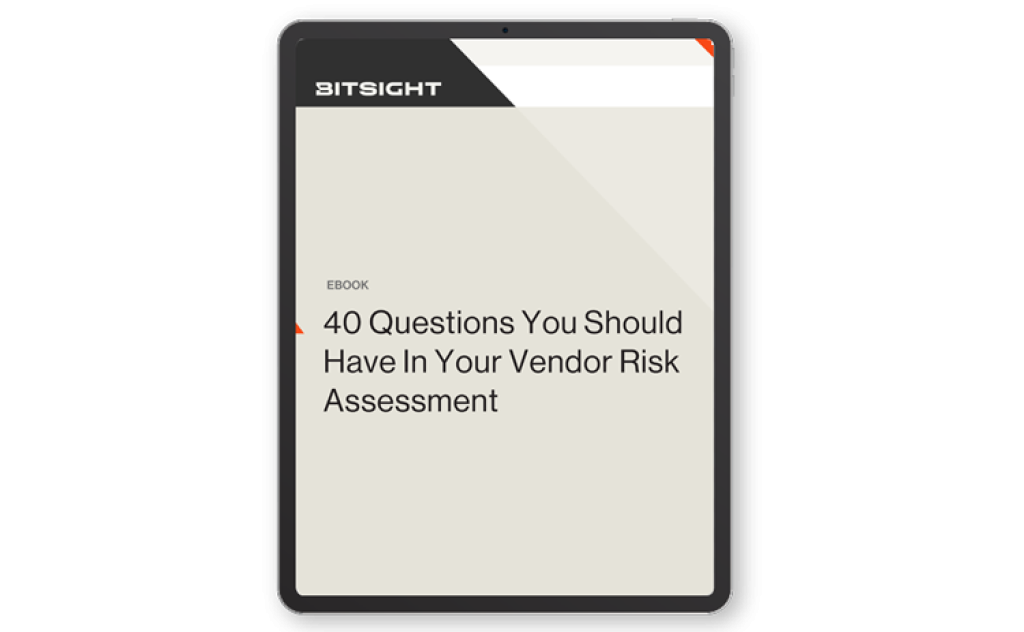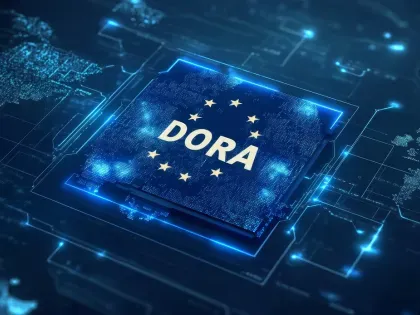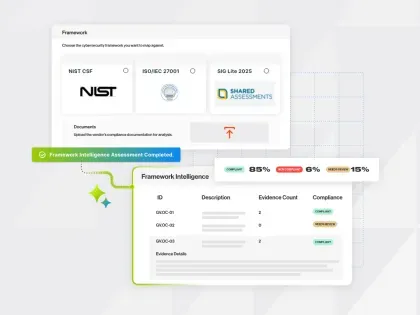With this ebook, we'll help you prioritize which vendors need the most attention with an in-depth security assessment – such as those with low security ratings, or critical vendors that maintain constant contact with your company’s systems.
The Top 7 Cybersecurity Frameworks
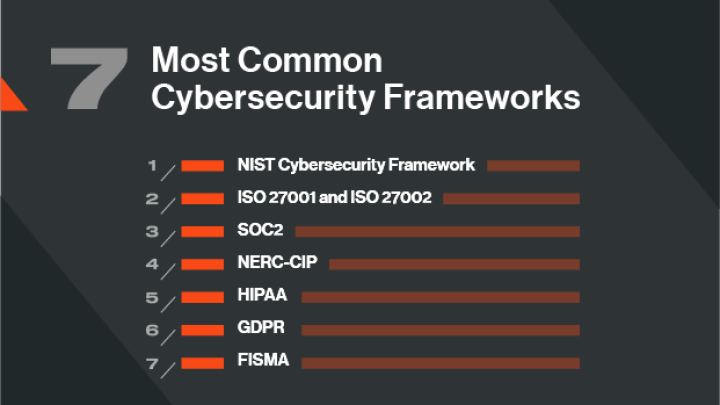
In today’s ever evolving threat landscape, protecting an organization's digital assets is no longer optional—it's a critical business imperative. Security ratings can provide a snapshot of your organization's cyber health, but to demonstrate a robust, long-term commitment to cybersecurity, it’s essential to align with recognized industry and regulatory best practices. This is where cybersecurity frameworks come into play.
What is a cybersecurity framework?
A cybersecurity framework is a structured set of standards, guidelines, and best practices designed to help organizations manage and reduce cybersecurity risks. These frameworks provide a comprehensive roadmap for assessing, monitoring, and mitigating potential threats. By establishing consistent processes and controls, they help organizations implement a proactive security strategy, manage regulatory requirements, and facilitate communication among security professionals and stakeholders.
Cybersecurity frameworks are critical for aligning security efforts across different teams, industries, and countries. They enable security leaders—such as CISOs, risk management teams, and IT leadership—to effectively assess their own security posture as well as that of third-party vendors, ensuring a unified approach to threat mitigation.
7 Top security frameworks
Whether mandated by regulation or adopted voluntarily, these frameworks form the backbone of an organization's cybersecurity strategy. Below, we outline seven of the most widely adopted cybersecurity frameworks and standards that can help guide your organization toward stronger, more resilient defenses:
1. NIST 2.0 Framework
The NIST Cybersecurity Framework was established in response to an executive order by former President Obama — Improving Critical Infrastructure Cybersecurity — which called for greater collaboration between the public and private sector for identifying, assessing, and managing cyber risk.
While compliance is voluntary, NIST has become the gold standard for assessing cybersecurity maturity, identifying security gaps, and meeting cybersecurity regulations.
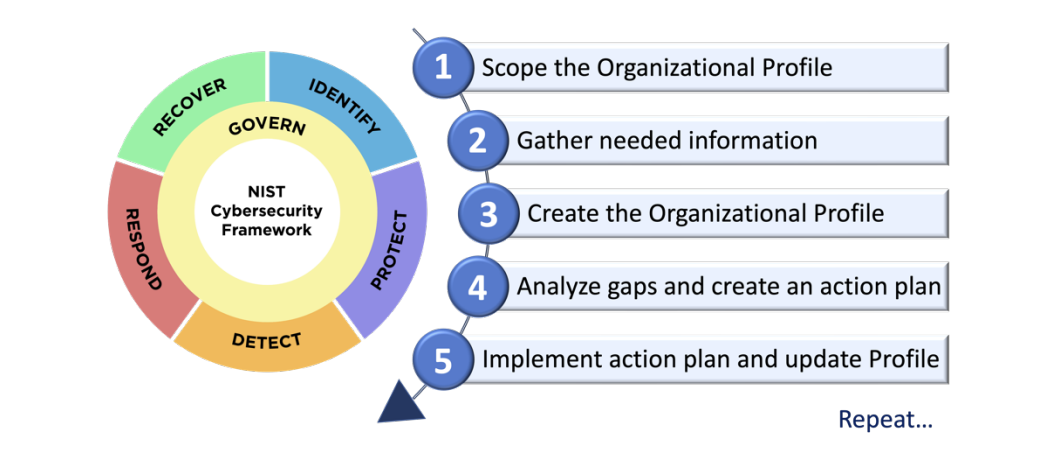
Source: https://nvlpubs.nist.gov/nistpubs/CSWP/NIST.CSWP.29.pdf
In 2024, NIST unveiled the Cybersecurity Framework 2.0 (CSF 2.0), marking its most significant update since the release of CSF 1.1 in 2018.
CSF 2.0 extends its reach beyond critical infrastructure cybersecurity, targeting a wider array of organizations including small schools, nonprofits, large agencies, and corporations, regardless of their cybersecurity expertise.
A notable addition in this update is the emphasis on cybersecurity governance, recognizing cybersecurity as a key component of enterprise risk management alongside financial and reputational risks.
The cybersecurity framework now encompasses six core functions — 1. Identify, 2. Protect, 3. Detect, 4. Respond, 5. Recover, and 6. Govern — providing a holistic approach to managing cybersecurity risk.
NIST has also introduced a suite of resources to facilitate the security framework's adoption. These include quick-start guides tailored for various audiences, success stories from organizations that have implemented the CSF, and a searchable catalog of informative references to align existing practices with the framework’s guidance.
Furthermore, the CSF 2.0 is designed to align with international standards, supporting global cybersecurity resilience efforts. The journey from CSF 1.1 to CSF 2.0 represents NIST's commitment to evolving the security framework in response to the changing cybersecurity challenges and the needs of its users. Organizations are encouraged to customize the CSF to their specific contexts and share their experiences to benefit the broader community.
2. ISO 27001 & ISO 27002 Frameworks
Created by the International Organization for Standardization (ISO), ISO 27001 and ISO 27002 certifications are considered the international cybersecurity standard for validating a cybersecurity program — internally and across third parties.
With an ISO certification, companies can demonstrate to the board, customers, partners, and shareholders that they are doing the right things with cyber risk management. Likewise, if a vendor is ISO 27001/2 certified, it’s a good indicator (although not the only one) that they have mature cybersecurity practices and controls in place.
The downside is that the process requires time and resources; organizations should only proceed if there is a true benefit, such as the ability to win new business. The certification is also a point-in-time exercise and could miss evolving risks that continuous monitoring can detect.
3. SOC2 Framework
Service Organization Control (SOC) Type 2 is a trust-based cybersecurity framework and auditing standard developed by the American Institute of Certified Public Accountants (AICPA) to help verify that vendors and partners are securely managing client data.
SOC2 specifies more than 60 compliance requirements and extensive auditing processes for third-party systems and controls. Audits can take a year to complete. At that point, a report is issued which attests to a vendors’ cybersecurity posture.
Because of its comprehensiveness, SOC2 is one of the toughest security frameworks to implement — especially for organizations in the finance or banking sector who face a higher standard for compliance than other sectors. Nevertheless, it’s an important security framework that should be central to any third-party risk management program.
Compliance
Read our guide to SOC2 compliance for requirements, types of SOC reports and standards, leadership recommendations, and a complete SOC2 compliance checklist.
Bitsight Vendor Risk Management’s latest enhancement – Instant Insights – leverages AI to surface and summarize the most important details from vendor-provided SOC 2 reports. With Instant Insights, GRC teams can work more efficiently through the vendor onboarding and assessment process, ultimately responding to requests from business stakeholders more quickly.
4. NERC-CIP Framework
Introduced to mitigate the rise in attacks on U.S. critical infrastructure and growing third-party risk, the North American Electric Reliability Corporation - Critical Infrastructure Protection (NERC CIP) is a set of cybersecurity standards designed to help those in the utility and power sector reduce cyber risk and ensure the reliability of bulk electric systems.
The NERC-CIP security framework requires impacted organizations to identify and mitigate third-party cyber risks in their supply chain.
NERC-SIP stipulates a range of controls including categorizing systems and critical assets, training personnel, incident response and planning, recovery plans for critical cyber assets, vulnerability assessments, and more. Read more about effective strategies for achieving NERC-CIP compliance.
5. HIPAA Framework
The Health Insurance Portability and Accountability Act (HIPAA) is a cybersecurity framework that requires healthcare organizations to implement controls for securing and protecting the privacy of electronic health information.
Per HIPAA, in addition to demonstrating compliance against cyber risk best practices — such as training employees — companies in the sector must also conduct risk assessments to manage and identify emerging risk.
HIPAA compliance remains a keen challenge for healthcare organizations, as Bitsight research suggests.
6. GDPR Framework
The General Data Protection Regulation (GDPR) was adopted in 2016 to strengthen data protection procedures and practices for citizens of the European Union (EU). The GDPR impacts all organizations that are established in the EU or any business that collects and stores the private data of EU citizens — including U.S. businesses.
The security framework includes 99 articles pertaining to a company’s compliance responsibilities including a consumer’s data access rights, data protection policies and procedures, data breach notification requirements (companies must notify their national regulator within 72 hours of breach discovery), and more.
Fines for non-compliance are high; up to €20,000,000 or 4% of global revenue, and the EU is not shy about enforcing them.
Compliance
Read our General Data Protection Regulation (GDPR) compliance checklist to learn more about developing a GDPR strategy and maintaining ongoing compliance.
7. FISMA Framework
The Federal Information Security Management Act (FISMA) is a comprehensive cybersecurity framework that protects federal government information and systems against cyber threats. FISMA also extends to third parties and vendors who work on behalf of federal agencies.
The FISMA security framework is aligned closely with NIST cybersecurity standards and requires agencies and third parties to maintain an inventory of their digital assets and identify any integrations between networks and systems.
Sensitive information must be categorized according to risk and security controls must meet minimum security standards as defined by FIPS and NIST 800 guidelines. Impacted organizations must also conduct cybersecurity risk assessments, annual security reviews, and continuously monitor their IT infrastructure.
Cybersecurity frameworks are vital guideposts
Cybersecurity frameworks provide a useful (and often mandated) foundation for integrating cyber security risk management into your security performance management and third-party risk management strategy.
With a security framework as your guidepost, you’ll gain vital insight into where your highest security risk is and feel confident communicating to the rest of the organization that you’re committed to security excellence.
